Originally released on the Sega Genesis in 1993, Rocket Knight Adventures chronicled the heroic quest of Sparkster, a possum with a sword and a jet pack. Fighting off an invading army of pigs, Sparkster saved the day and got the girl. Though the game sold well enough to spawn a direct sequel on the Genesis and a spin-off title on the SNES, Sparkster failed to achieve Sonic levels of popularity. He was quietly resigned to cameo appearances in other titles, forgotten, save for a core group of fans — until now.
Working with UK developer Climax, Konami brought the precocious possum out of retirement with last week's release of Rocket Knight on Xbox Live Arcade. As the story goes, Sparkster has been spending the last decade and a half tending a farm and generally living low while the possums and pigs live in peace. His tranquil lifestyle is broken when an invading army of wolves threatens to take over the kingdom. Since a hero's work is never done, good ol' Sparky rockets off and back into action.
Lovingly rendered in colorful 2.5-D, Rocket Knight is a visual homage to the games that came before. While it is certainly of this generation in terms of fidelity, the style is undoubtedly inspired by the 16-bit generation. Characters are large, with exaggerated features, and the backgrounds are full of detail. There is repetition in the items found within individual levels, but the design changes from world to world, so everything seems fresh as you progress deeper into the adventure.
Spread across four worlds (and 14 levels), Sparkster's quest is designed to encourage the liberal use of his rocket-powered jetpack. Things start out somewhat basic, with a fairly standard platformer design philosophy; however, by the time you reach the second world, the level layout opens up. You can still plow through in a straightforward manner, but creative use of the jetpack will get Sparkster to new heights and hidden items.
By default, the jetpack fuel automatically recharges, though the game changes this up from time to time. For example, in the icy mountains, the cold air freezes Sparkster's pack. The only way to recharge is to warm up by a fire. As a result, players are forced to think a bit more strategically when attacking here.
Learning to master all of Sparkster's moves is one of the key challenges within Rocket Knight simply because the little guy can't exactly go toe-to-toe with most of the baddies. To survive, you'll need to learn to move nimbly, quickly attacking and then getting out of the way. Like many classic 16-bit titles, all of the enemies within Rocket Knight have a pattern of attack. Learn the pattern, and you'll have an instant advantage.
Pulling another page from its predecessors, not every level in Rocket Knight is on the ground. When you're not platforming, you're flying. All of the flying levels are set on a fixed pace, with enemies and obstacles constantly oncoming. Since there's no stopping for a breather here, you need to balance attacking with bullet avoidance. Sparkster isn't any more resilient in the air than he is on the ground, so avoiding incoming fire is a biggie.
Back on the ground, Sparkster also has to deal with a few creative boss fights. Just like bosses from the 16-bit era, those that you'll face off with are tough and relatively impervious to direct attack, but each has a weak spot just waiting to be discovered. Find the weak spot, master the pattern, and persevering becomes less of a challenge than initially thought. The individual boss fights are easily the highlight of the game.
Unfortunately, not everything with Rocket Knight is a bed of roses, as the game's biggest strength — its desire to be a reborn 16-bit adventure — is also its biggest weakness. Although Rocket Knight nails the look and feel of an updated classic, the game also suffers from some of the more annoying flaws of the sprite generation. The biggest of these is the precision jump.
Any gamer worth his or her salt can speak to the stacks of old-school games that were plagued with levels whose challenge relied on nothing more than making a series of ultra-precise jumps. One wrong move, and that's all she wrote. It was basically the 16-bit version of this generation's "bad camera" flaw. Sadly, precision jumping rears its ugly head here.
The jumps of doom don't show up often, but about two-thirds of the way through, they start appearing with enough force to wring forth expletive-laced bouts of frustration. While it may be true that this is the authentic 16-bit experience, it doesn't make it any less annoying. One level in particular has Sparkster racing to escape an explosion. To do so, you need to execute a perfectly timed series of jumps, rocket boosts and wall ricochets. Mess up even once, and Sparky gets caught in the blast. The net result is one hero, extra-crispy.
Part of the problem with the jumping sections is no doubt the Xbox 360 controller itself. As fighting game fans are acutely aware, the 360's analog stick isn't the most precise thing on the planet, and this was evident while playing through Rocket Knight. Though it worked as expected most of a time, we had a noticeably high number of directional misfires when attempting to either rocket up or at an angle. We would try to shoot up, and instead found ourselves ricocheting diagonally off a wall and vice versa. It's true that this isn't entirely the game's fault, but then again, given the standard controls on the platform, it would have been nice if things were more forgiving in order to compensate.
Length is also a downside, as none of the levels are incredibly long. While it is possible to blast through the entire game in under an hour (there is even an Achievement for doing so), most players will likely take around two to four hours on the first playthrough. Add a bit of time to that if you're attempting to collect all the items on each level or going through one of the higher difficulty levels.
The level of challenge, along with a strict limit on the number of continues, is where Rocket Knight generates most of its replay value. Make it all the way to the last level and then run out of continues? You're starting over from square one. It's not that big a setback, given the overall length of the game, yet it still feels like an artificial hindrance — true to its roots, yet oddly out of place in today's gaming world.
Ultimately, Rocket Knight is going to be a game that you either "get" or you don't. It most certainly is not a game for everyone. However, if you happen to be among those with a soft spot for the 16-bit generation or you're all about making a one-credit, perfect run on an arcade machine, then this is a game to check out. It is a loving re-creation of an experience from a bygone era, warts and all. Keep that in mind going in, and you won't be disappointed.
Score: 7.6/10
More articles about Rocket Knight


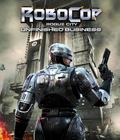


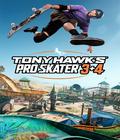


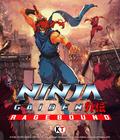
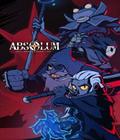

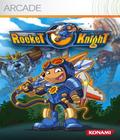 In Rocket Knight, a 2D side-scrolling title first released on the 16-bit SEGA Genesis and SNES, players take on the role of a fiery opossum named Sparkster who returns home to the Kingdom of Zephyrus after 15 years to find it in shambles. Using wits and a trusty rocket pack, players must steer clear and overcome a hostile wolf army looming to take the lives of the Zephyrus people.
In Rocket Knight, a 2D side-scrolling title first released on the 16-bit SEGA Genesis and SNES, players take on the role of a fiery opossum named Sparkster who returns home to the Kingdom of Zephyrus after 15 years to find it in shambles. Using wits and a trusty rocket pack, players must steer clear and overcome a hostile wolf army looming to take the lives of the Zephyrus people. 























